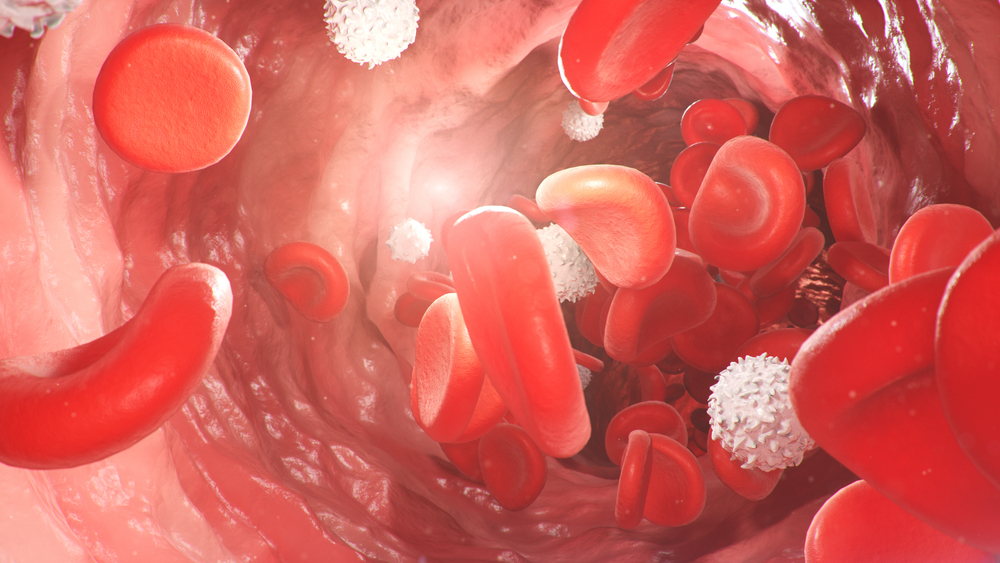
What is being tested?
Haemoglobin is a protein that transports oxygen throughout the body - necessary to sustain life. It is normally found inside red blood cells (RBCs). Very little is found free circulating except when RBCs are destroyed and their haemoglobin released.
Haptoglobin is a protein produced by the liver. Its job is to find and attach itself to free haemoglobin in the blood. This forms a complex that is rapidly cleared out of the circulation by transport back to the liver for destruction and recycling.
This test measures the amount of haptoglobin in the blood. When large numbers of RBC are destroyed, haptoglobin concentrations in the blood will temporarily decrease as the rate of use of haptoglobin exceeds the rate at which the liver can replace it.
Increased RBC destruction may be due to inherited conditions that cause abnormalities in the size, shape, or consistency of RBCs, an abnormal type of haemoglobin (haemoglobin variant), an acquired autoimmune reaction, a transfusion reaction, certain drugs, or mechanical breakage (such as may be seen with some prosthetic heart valves). The destruction may be mild or severe, acute or chronic and it can lead to haemolytic anaemia (a shortage of normal RBCs). Patients with haemolytic anaemia may experience symptoms such as fatigue, weakness, and shortness of breath and their skin may be pale or jaundiced (yellowish).
Liver disease may also result in decreased haptoglobin concentrations as the liver damage may inhibit both the production of haptoglobin and the clearing of the haptoglobin-free haemoglobin complexes.
How is it used?
Haptoglobin testing is used primarily to help detect and evaluate haemolytic anaemia and to distinguish it from anaemia due to other causes; however, it cannot be used to diagnose the cause of the haemolysis. Other laboratory tests may be required to assist in determining the cause, such as test for autoantibodies to detect autoimmune causes, sickle cell tests, G6PD or a haemoglobin evaluation.
Haemolytic anaemia is not a common cause of anaemia. The condition can be inherited or may be acquired due to various factors and may either develop suddenly or over time.
A haptoglobin test may be ordered along with a direct antiglobulin test (DAT) to help determine if someone who has received a blood transfusion has had a transfusion reaction.
When is it requested?
The haptoglobin test is ordered when someone has symptoms and signs of anaemia such as
Along with findings suggestive of haemolytic anaemia such as jaundice and dark urine.
The test can be ordered along with a reticulocyte count and a blood film examination when someone has an abnormally low RBC, haemoglobin, and/or haematocrit test result. It may also be ordered along with a direct antiglobulin test if someone has had a blood transfusion and is suspected of having a transfusion reaction. The test may be ordered in conjunction with a total or indirect bilirubin test.
What does the result mean?
When haptoglobin levels are decreased, along with an increased reticulocyte count and usually also a decreased RBC, haemoglobin and haematocrit, then it is likely that the person has some degree of haemolytic anaemia.
If the haptoglobin is normal or borderline and the reticulocyte count is increased, then RBC destruction may be occurring in organs such as the spleen and liver. Because the freed haemoglobin is not released into the bloodstream, the haptoglobin is not used up and so is normal.
If the haptoglobin concentrations are normal and the reticulocyte count is not increased, then it is likely that any anaemia present is not due to RBC breakdown.
If haptoglobin levels are decreased without any signs of haemolytic anaemia, then it is possible that the liver is not producing adequate amounts of haptoglobin.
HAPTOGLOBIN | RETICULOCYTE COUNT | RBC COUNT, HAEMOGLOBIN, HAEMATOCRIT | POSSIBLE INTERPRETATION |
Significantly increased | Increased | Decreased | RBC destruction within blood vessels (intravascular haemolysis) |
Normal or slightly decreased | Increased | Decreased | RBC destruction, likely within organs (extravascular haemolysis) |
Normal | Not increased | Decreased | Anaemia due to a cause other than RBC destruction (e.g. decreased RBC production in the bone marrow) |
Is there anything else I should know?
Haptoglobin is considered an 'acute-phase' protein. This means that it will be elevated in many inflammatory diseases, such as ulcerative colitis, acute rheumatic disease, heart attack and severe infection. This will complicated the interpretation of the haptoglobin results. Haptoglobin testing is not generally used to help diagnose or monitor these conditions.
Haptoglobin levels may be affected by massive blood loss and by conditions associated with kidney dysfunction.
Drugs that can increase haptoglobin levels include androgens and corticosteroids such as prednisolone. Drugs that can decrease haptoglobin concentrations include isoniazid, quinidine, streptomycin, and birth control pills.
Common questions
It depends on the cause of the decrease. If it is due to acute haemolysis, such as may be seen with a transfusion reaction, then it will return to normal once the donor blood has been cleared from the system. If it is due to chronic haemolysis, then the concentration should return to normal levels if the underlying condition can be resolved. If the underlying condition cannot be resolved or if the decreased concentrations of haptoglobin are due to decreased production (due to liver disease), then levels may continue to be lower than normal.
More information
What is Pathology Tests Explained?
Pathology Tests Explained (PTEx) is a not-for profit group managed by a consortium of Australasian medical and scientific organisations.
With up-to-date, evidence-based information about pathology tests it is a leading trusted source for consumers.
Information is prepared and reviewed by practising pathologists and scientists and is entirely free of any commercial influence.